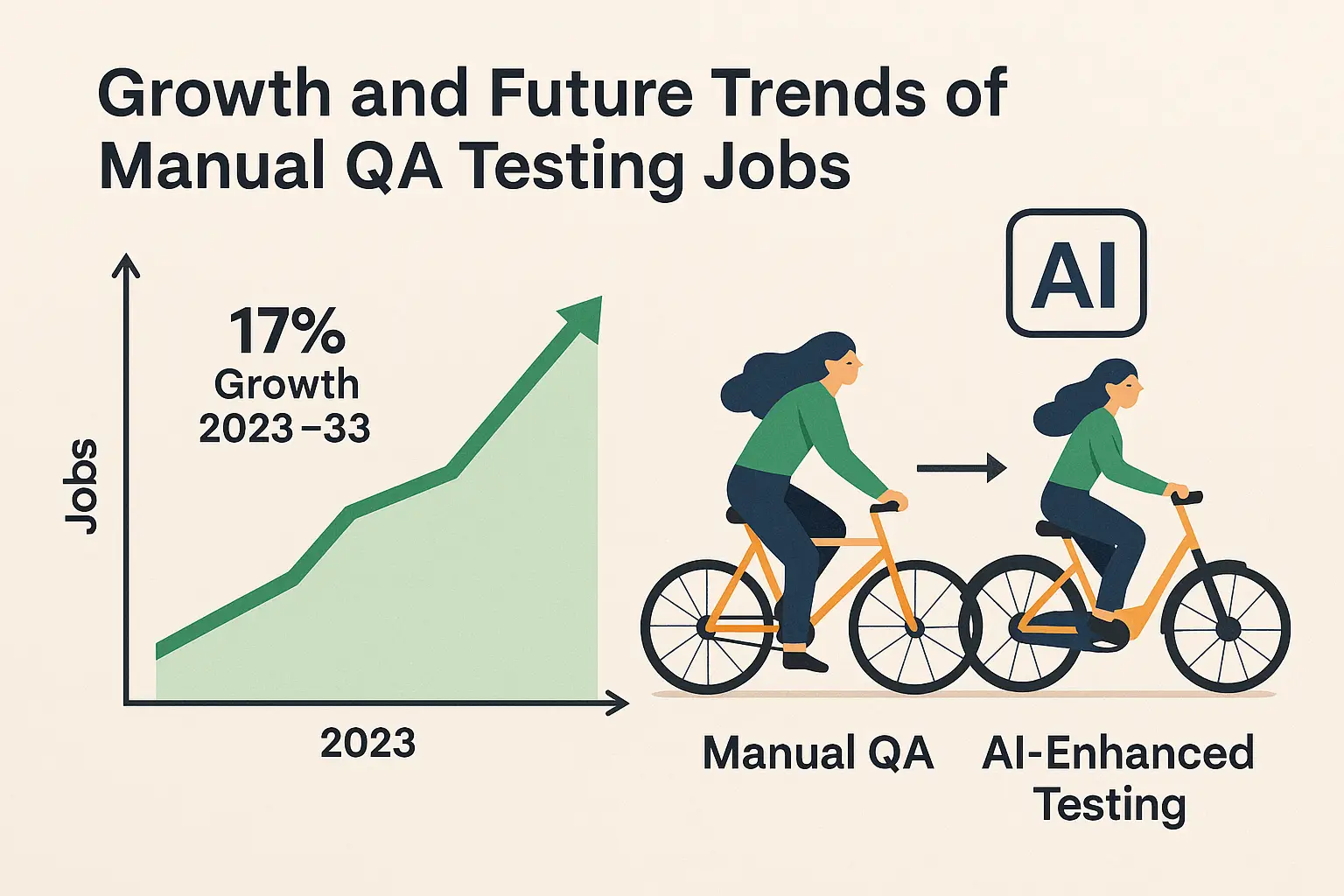Manual Software Testing Jobs
If you’re exploring a career in software testing, you’re in the right place. Manual software testing jobs are in high demand and still form the foundation of many quality assurance (QA) processes, even in today’s AI-driven tech world. This article breaks down job platforms, market data, trends, challenges, and how we can help you get started—no experience required.
Top Job Seeking Platforms:
LinkedIn – A leading platform for tech professionals, often featuring roles like manual QA tester or hybrid QA analyst positions.
Indeed – Offers thousands of listings for manual testing jobs in the USA, from internships to mid-senior roles.
Glassdoor, ZipRecruiter, and Monster – Reliable sources for job postings with company reviews and salary transparency.
Niche platforms – Sites like Testers.io or QA-specific Slack and Discord communities often post new openings.
How Many Jobs Are Out There?
According to the U.S. Bureau of Labor Statistics (BLS):
In 2023, there were over 205,000 software QA tester roles in the U.S.
The broader category of software-related roles topped 1.9 million.
Manual positions specifically account for approximately 165,000 professionals, with an average salary of $81,680.
Looking ahead, software testing roles are expected to grow by 17% between 2023 and 2033, creating an estimated 327,900 new roles. This growth is well above the national average for all occupations, highlighting a strong, stable demand.
Demand Trends and Market Shifts
Manual testing remains a core component of QA work:
82% of QA professionals still use manual testing methods regularly.
However, automation is gaining ground, with 46% of professionals replacing at least half of their manual workflows.
The manual testing services market is growing at an estimated 11.7% CAGR from 2025 to 2031.
Salary potential varies: manual QA testers average around $82,000/year, while automation roles can exceed $116,000/year.
The Future of Manual QA Roles
The industry is shifting—but not disappearing. Manual QA roles are evolving rather than being replaced. Think of it as upgrading from a traditional bike to an electric one: same direction, more power.
What to expect going forward:
AI integration – Testers are increasingly using tools like ChatGPT or Copilot to enhance efficiency. Around 40%–70% of QA teams have adopted some form of AI.
Hybrid QA roles – Professionals who blend manual testing with scripting (Selenium, Cypress, etc.) are in high demand.
Strategic QA – Testers are becoming more embedded in agile teams, with roles evolving into titles like “TestOps Engineer” or “QA Strategist.”
Is It Hard to Break Into QA Testing?
Starting a career in IT can feel like learning to sail—calm waters at first, but the better your training, the easier it is to navigate the storms.
Here are the current entry barriers:
Most testers learn on the job – Only 18% received formal QA education, making it a skill-based rather than degree-based profession.
The competition is shifting, not vanishing – While some worry about automation, human testers are still critical for exploratory testing, UX evaluations, and edge-case detection.
Skill expectations are growing – Today’s QA professionals are expected to understand both manual and automated testing, with a basic grasp of AI tools.
How We Can Help You Get There
You don’t need prior experience or a tech background to start. Here’s how we prepare you for manual quality assurance jobs:
Manual Testing Fundamentals – Learn how to write test cases, identify bugs, document issues, and perform exploratory testing.
Hands-On Projects – Use real QA tools like TestRail, JIRA, and Postman to simulate real-world testing scenarios.
Intro to Automation – Learn the basics of automation testing using tools like Selenium to future-proof your career.
AI Integration – Discover how to leverage AI tools in your QA workflows.
Career Support – Get help building a resume, preparing for interviews, and finding jobs on platforms like LinkedIn and Indeed.
Key Takeaways
There are currently over 205,000 QA roles in the U.S., with 327,000 more projected by 2033.
Manual testing is still widely used, with 82% of testers relying on it in their day-to-day work.
Salaries for manual QA testers average $82,000/year, with growth potential into hybrid and automation roles.
The market is evolving—but the door is still wide open for newcomers.
With the right training, anyone can land a role in QA—regardless of background.
If you’re ready to start your journey, we’re here to teach you everything you need to succeed in manual QA testing—and beyond.

